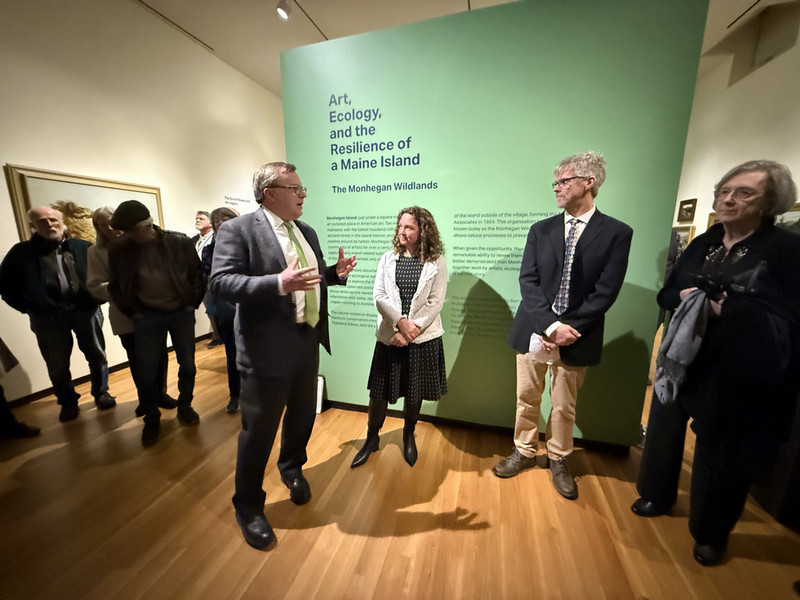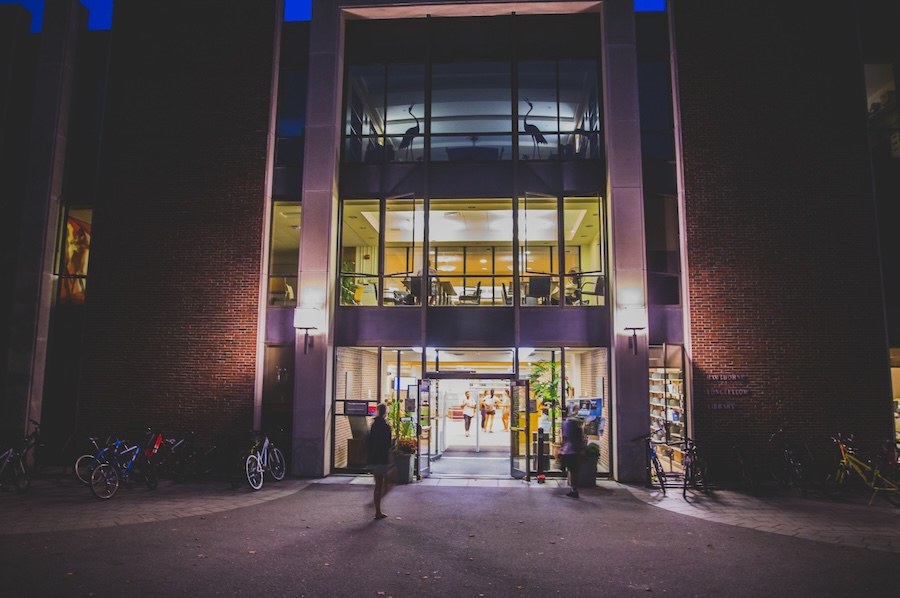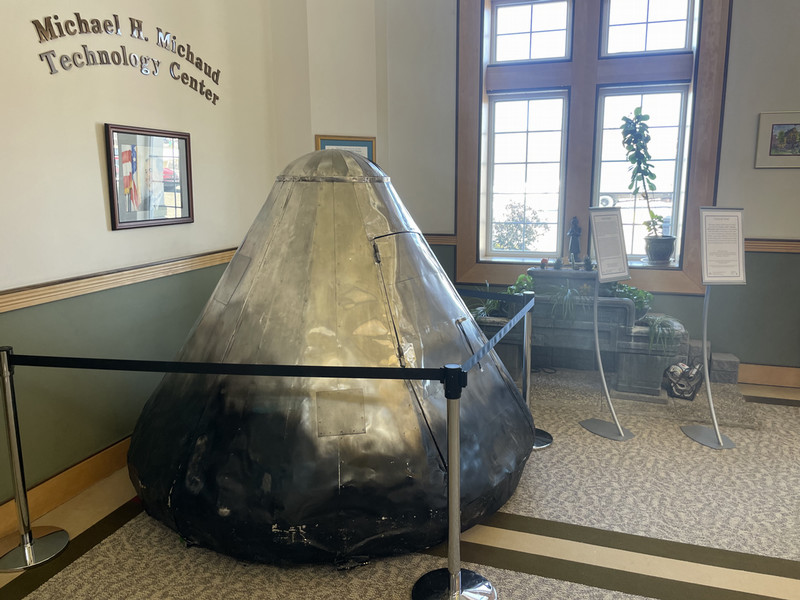'Looking Anew: Art and Estrangement, 1900–2000' Features Recent Acquisitions
By Bowdoin College Museum of Art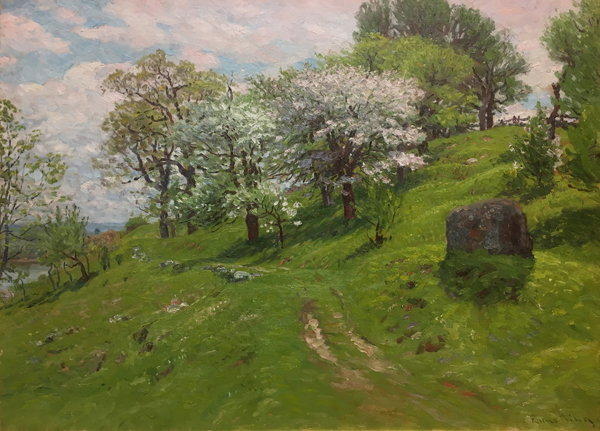
Many artists of the twentieth century purposefully made the familiar look strange in order to challenge conventions. They prompted viewers to assume an analytical and critical role towards artworks and perhaps even towards society at large. To be on view from December 14, 2017 through April 8, 2018, Looking Anew: Art and Estrangement, 1900–2000 offers viewers the opportunity to trace twentieth-century artistic innovations and challenges the viewers to look anew at the world.
The Museum is especially pleased to present a number of new acquisitions in this exhibition, including a painting by one of the masters of American Impressionism, John Joseph Enneking; a painting by Mark Baum, an immigrant artist who was close to members of the New York School and spent ample time in Ogunquit; and a work by the groundbreaking feminist artist Nancy Spero.
While living in Boston, John Joseph Enneking and his wife Mary Eliot spent many days at their summer home in North Newry, Maine. Enneking not only raised awareness of the beauty of the New England landscape, but he was also an active preservationist and, in the 1890s, served as Chairman of the Parks Commission of Greater Boston. The view of a knoll covered with flowering fruit trees, captured in Hillside Landscape in Spring, is painted with sparkling colors applied with loose, pastose strokes. Enneking developed his painterly idiom during his training in Munich and through his contact with the French Impressionists, some of whom he befriended during his repeated stays in Paris during the 1870s. Enneking’s Hillside Landscape in Spring was given to the Museum by John P. Bibber and Betty M. Bibber in 2017 and will be on view for the first time in Looking Anew.
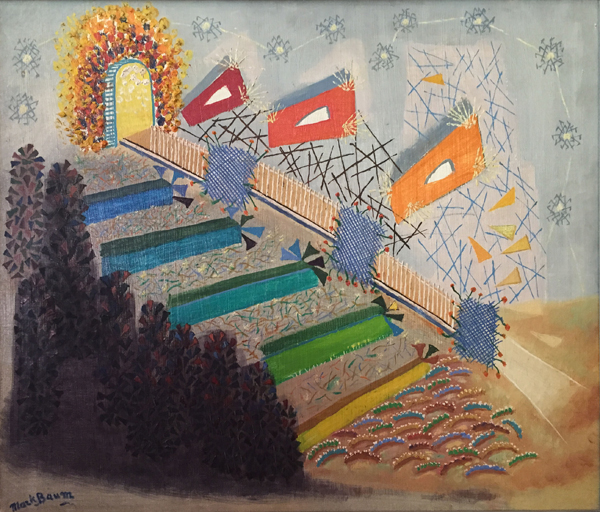
Mark Baum pursued painting as a spiritual quest. Stairs that suggest a path of enlightenment and bright colors depicted in gradual progression are recurring motifs in Mark Baum’s work, as can be seen in his 1957 painting, Processional, which was given to the Museum in 2017 by Paul F. and William M. Baum. However, the repetition of modular shapes, such as hooks, triangles, and arches, remained Baum’s preferred mode of expression. Born in Galicia, then part of the Austro–Hungarian Empire, Baum immigrated to New York City when he was sixteen years old. Processional dates to a period when he, encouraged by early support from the WPA and a string of exhibitions, sought to establish himself as a professional artist in New York. Jack Tworkov, whose work will also be exhibited in Looking Anew, counted among his closest friends. However, Baum didn’t share his friend’s (and fellow immigrant’s) success as a founding member of the New York School. Starting in 1961, Baum spent most of the year in Ogunquit, Maine, where he maintained an active social life and worked in the studio into his nineties.

Nancy Spero was a groundbreaking feminist artist who fought established cultural, gendered, and political power structures through her artistic practice. In her commitment to depict predominantly female figures, her work countered, and intentionally destabilized, traditional representations of women in art and in history. In a 2007 interview with art21, Spero explained that her experience in Women Artists in Revolution (WAR) during the 1970s shaped her later work: “I became interested in women artists and how the art world was set up—how mostly male artists got attention—and what it meant to be a woman artist. That shifted my art a lot, toward the political.” The printed female bodies repeated and scattered across the vertically combined colored paper of Carnival II take the form of a hieroglyphic-like language, written in the poses, the gestures, and the movements of the female bodies re-presented outside of their cultural and historic contexts. This hieroglyphic-like language appears throughout Spero’s oeuvre, as her work moved from an early incorporation of text, to her later development of symbolic language. Forming a unique symbolic language, Spero’s female figures tell their own stories, re-tell the world’s history, and speak for themselves. As Spero described herself, “I decided to view women and men by representing women, not just to reverse conventional history, but to see what it means to view the world through the depiction of women.” Spero’s work reframes the role of women in history, society, and art. It has challenged audiences from the 1960s to the early 2000s to “look anew,” to question the status-quo and to reconsider conventions, including the distinction between language and image. Spero’s collage print titled Carnival II (2000) was given in 2017 to the Museum by Alvin Hall.

